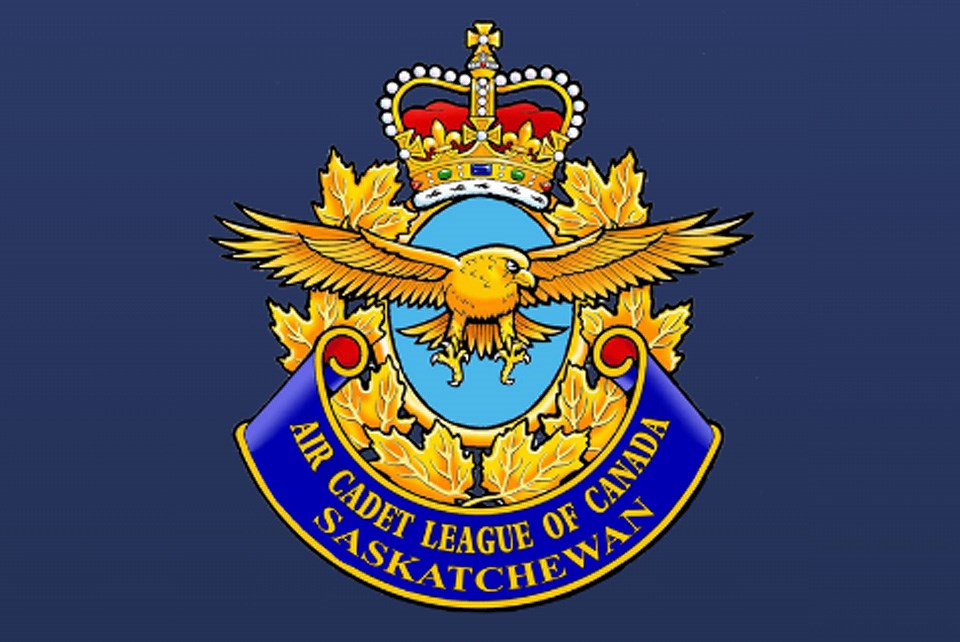KAMSACK — At the Kamsack Air Cadet Squadron’s annual ceremonial review on May 21, special recognition will be made of the fact that 2025 marks the 50th year that females have been permitted to participate in the national cadet program.
Although, according to sources, initially female registration was limited to only 20 per cent of a squadron’s number, things have changed. This year, more than half of the Kamsack squadron’s cadets are female.
With the 50th anniversary in mind, members of the Kamsack cadets’ civilian committee delved into newspaper archives, talked to former cadets and investigated what information was available on the Internet to discover what it was like 50 years ago when females were originally allowed to join the program.
Among the first group of female cadets to join the Kamsack squadron were current Kamsack residents Lynn (nee Elliott) Baillie and Dianne (nee Bennett) Smutt.
“In addition to us, Noreen Trafananko and Jane Mitchell joined,” Baillie said of the first year that females were admitted into the program.
Asked why she decided to join the cadets, Baillie said that she had always thought it was a good program.
“It was good for us,” she said. “You learn and go places. Back then, we didn’t go to the places cadets visit now, but we went to Camp Penhold.
“It was good to be together. We learned how to shoot during the range program, and going to camp was nice. It was at camp that we were able to meet with other kids. The only not-so-good thing was that we had to march everywhere.
“The guys were all good to us, very good.”
Baillie, who joined the program when she was 15, stayed with the program for four years until she aged out. Although she was the first in her family to join cadets, her three children, two sons and one daughter, all joined the cadets, and while they were enrolled, Baillie had worked with the civilian committee, including serving as the squadron’s treasurer for many years.
“It’s a fantastic program,” she said. “It helps with leadership and how to deal with a lot of stuff that one encounters in life.
“Everyone should join cadets.”
Dianne Smutt, who was also among the first females to join the program at Kamsack, said that having been raised on a farm where involvement in group activities had been limited, she had enjoyed 小蓝视频 a cadet because in the program, one had more opportunity to do things.
“We got to go places, marched and learned about respect and responsibility,” Smutt said, adding that she found that the male cadets did not treat the newly-admitted females any differently.
The cadet program helps make one a better person, she said.
Issues of the Kamsack Times in 1976 and the years immediately after indicate that the female cadets did well. In 1977, Janice Falkiner received the award for 小蓝视频 the most proficient “kadette” from Alvin Thies, the chair of the civilian committee; Noreen Trafananko, who had achieved the rank of sergeant, received the award for 小蓝视频 the top “kadette” marksman, and later she received the squadron’s most proficient cadet award from Paul Ratushny, the committee chair; Sgt. Beverly Bennett was named the most proficient “kadette,” Sgt. Lynn Elliot received a graduation pin and certificate from Capt. G. Harris.
According to press clippings, among other female cadets in the Kamsack squadron in the late 1970s were Therese Koturbash, Deb Mandzuk and Norinne Cote.
The Royal Canadian Air Cadets is a Canadian national youth program for young individuals aged 12 to 18. Under the authority of the National Defence Act, the program is administered by the (CF) and funded through the (DND). Additional support is provided by the civilian (ACLC).
Together with the and , it forms the “largest federally funded youth program in the country,” said information provided by the civilian committee.
The first squadrons were established in 1941 to train young men for duties during the Second . Today, the focus is on general aviation within the aim: “To instill in youth the attributes of good citizenship and leadership; promote physical fitness; and stimulate an interest in the activities of the Canadian Forces.”
The majority of cadet training takes place at the local squadron during the regular school year, with a percentage of cadets selected for summer training courses across Canada. Central to the air cadet program are the gliding and flying courses offered to air cadets who qualify. One in five private pilots in Canada is an ex-air cadet, and 67 per cent of commercial and airline pilots began their careers as an air cadet, the information said.
Currently, there are 454 squadrons located across the country with enrolment of over 26,000 Air Cadets.
In 1975, legislation was changed to officially allow the enrolment of female cadets into the Royal Canadian Sea, Army, and Air Cadets.
The cadet program aims to develop in youth the attributes of good citizenship and leadership; promote physical fitness; and stimulate the interest of youth in the sea, land, and air activities of the .
All former cadets, in addition to family and friends of current cadets, are welcome to attend the ceremonial review at the Kamsack Comprehensive Institute, beginning at 5:30 p.m. on May 21.




